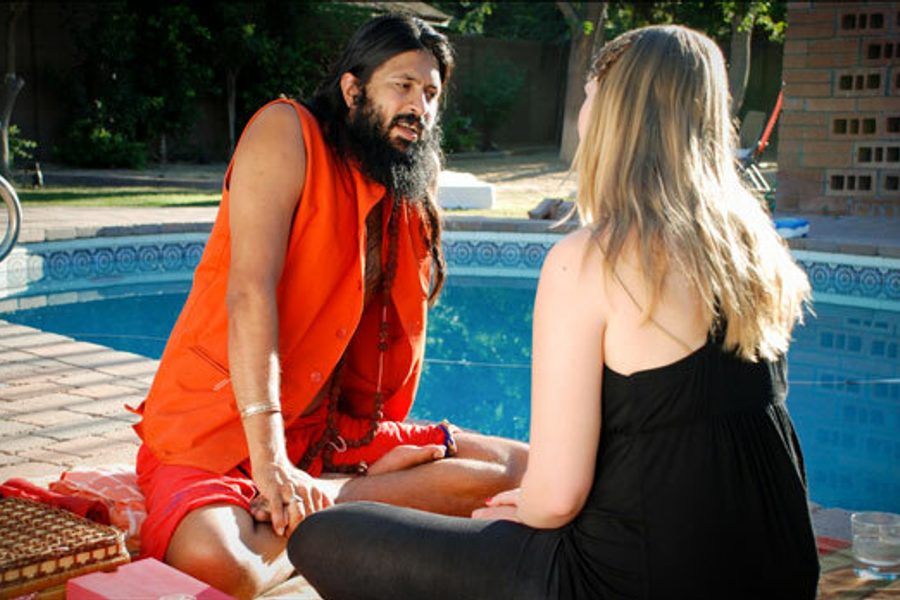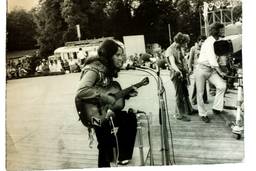Chile’s One-Man Truth Commission
Patricio Guzmán’s latest film extends his 35-year yowl of rage.
Michael Atkinson

Chile’s self-appointed one-man Truth and Reconciliation Commission, Patricio Guzmán, has devoted the last four decades to chronicling the short-lived Allende administration and the Pinochet dark age that followed. No one has dedicated themselves to portraying their homeland as relentlessly as Guzmán, who as a comfortable middle-class Santiagoan was enchanted with Allende socialism – and then rocked by the 1973 Pinochet coup.
Since then, his entire career has been committed to rendering onto film the exact dimension of that disastrous betrayal and its protracted fallout. In film after film, Guzmán yowls alone in the wilderness of a national culture still unwilling to face the Pinochet era’s cost in corpses and vanishings.
Guzmán’s new film, Nostalgia for the Light, and a career retrospective surveying more than three decades of his work will both wend their way through U.S. theaters this spring and summer. The proper place to begin is where Guzmán began, with The Battle of Chile (1975−79), arguably the most vital piece of actual history ever put on film – if only because entire nations don’t normally plunge into homicidal autocracy on film.
The Battle’s three parts total more than four hours and document the ascension of Allende and the subsequent CIA-fueled coup that bloodied the streets (and, famously, killed one of Guzmán’s cameramen as he was shooting). The film is a scalding lesson in orchestrated class disaster and power-mad malice that should be required viewing for high schoolers everywhere. It remains underseen, and that’s probably not an accident. (See the industrial campaign against the Oscar nomination for the eco-activist film Gasland).
Guzmán completed his epic in exile in Spain, returning a few years after Pinochet ceded power to show the film for the first time in Santiago. That trip was recorded as Chile, the Obstinate Memory (1997). It’s a desperate document, as Guzmán picks at scabs no one wants opened, bringing The Battle to schools where children were taught a bizarro version of 1973. Guzmán’s films were by now marked by head-shaking stupefication – how could history, especially when it’s filmed, cease to matter?
But history does Guzmán’s work for him next, with Pinochet’s 1998 arrest in Great Britain on human rights violations charges. The Pinochet Case (2001) tracks the case from Madrid prosecutor Carlos Castressana’s discovery of a loophole in Spanish law enabling him to charge Pinochet with human rights violations, through Pinochet’s safe landing in his homeland – at which point the sleepwalking Chilean judicial system suddenly smells the carrion.
Time is split between the regime’s traumatized survivors and a minute-by-minute account of the British court’s extradition chess game. Pinochet would die in relative comfort a few years later, but Guzmán never loses sight of the bones in the ground or the hypocrisy of world leaders (Margaret Thatcher comforted the house-arrested Pinochet).
He returned to the past again with Salvador Allende (2004), giving the lost socialist icon the biography no one in Chile has written. In contrast, Nostalgia for the Light seems at first blush to detour in an odd new direction – toward astronomy and philosophy, landing in the Atacama desert, the elevation and dryness of which make it one of the globe’s optimal observatory locations. Guzmán uses the stars’ distance to ruminate on the nature of time, but eventually he again finds his sociopolitical mojo, speculating about how time has treated the ghost town-turned-concentration-camp of Chacabuco: its ex-prisoners, the dumped bones of disappeared Pinochet victims and the old women who still scour the desert for body parts.
It’s all about memory and guilt, or the lack thereof. In a contemplative mode that comes with age (he is now 69), Guzmán free-associates all over the place. But the film’s philosophical musings slowly funnel down, as we knew they would, to a silent yowl of rage and a desperate plea for remembrance.
Often stark and ravishing, Nostalgia for the Light is most moving as a manifestation of the filmmaker’s stubborn righteousness. Chile needs this artist because it seems that once he’s gone, the selfish forgetfulness he’s been combating all these years will swallow his work altogether, and Pinochet will finally win for good.









